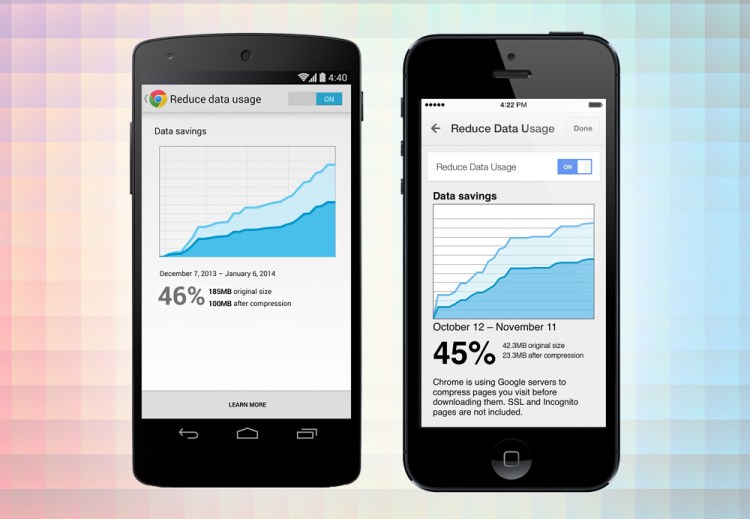While mobile browsing rates are skyrocketing — a Pew Internet report claims more than a fifth of U.S. adults do most of their browsing on a cell phone — bandwidth caps have remained reliably flat.
Google may be able to help bridge that gap, providing a bit more wiggle room for people on rate-limited plans.
The American tech giant is rolling out a new version of Chrome for mobile devices. It includes a data compression feature, which Google says can reduce data usage by as much as 50 percent. Data compression also enables Chrome’s “Safe Browsing” tech, which helps protect against common threats like phishing, drive-by malware, and harmful downloads.
A few other mobile browsers offer similar data compression features, including Opera and Amazon Silk (developed for Kindle Fire). To activate data compression for Chrome, visit settings, then bandwidth management, then reduce data usage.
The new Chrome release includes a few additional features. Android folks can now save websites as shortcuts on the homescreen that resemble other Android apps. In some cases, websites will open as full-screen web apps that sit alongside native apps.
The iOS crowd, meanwhile, now has access to Google Translate from inside the browser. Chrome for Android and desktop devices already included Google Translate functionality.






![Reblog this post [with Zemanta]](http://img.zemanta.com/reblog_e.png?x-id=4f085668-f6dd-4461-aa23-c5fce5f0b6c8)

